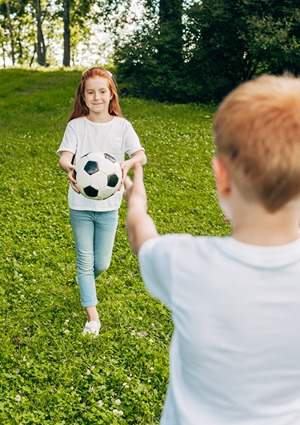5 Motivational Rewards to Encourage Good Behavior in Kids
Whenever parents talk of discipline, many focus too much on punishment or restrictions. It’s just as important for parents to reward children for good behavior and accomplishments. That said, the balance between treats and spoiling may confuse some parents. There’s also the worry of favoritism to those with multiple children.
Parents must be mindful of these issues and strive to create a fair and balanced environment. To that end, rewards must motivate children to strive for better, not just for the promise of a material reward. These rewards must be a net positive for the child’s overall development while ultimately being a fun gift.
Motivational Reward Ideas for Kids
There are many ways to reward children that are both motivating and beneficial., without being overly materialistic.
Verbal Praise and Recognition
Simple words of encouragement and acknowledgment can go a long way. Let your child know you see and appreciate their efforts. Don’t be too general, either. Focus on the aspects of their performance or skills that warrant praise. For example, if your child finished their homework fast (and correctly), praise their speed and smarts. If a child encounters a bully, and they turn the other cheek, praise them for being mature. Validation is an excellent reward.
Hobby-Based Gifts
Encourage and nurture your child’s hobbies by giving them rewards relevant to their pastimes. For example, if they love to draw, provide them with art supplies like new coloring tools or a sketchbook. If they’re sporty, give them new athletic gear or take them out to the ball game. If they like video games, research what kind of games they like and look for the most appropriate and popular for their age. The more specific a gift, the more a child recognizes the attention their parents give them.
Quality Time
Allowing extra time for a favorite activity or game can be a great incentive. Even better, plan a trip to the park, zoo, or a favorite restaurant as a reward for significant achievements. If they’re introverted, spend one-on-one time with your child doing something they enjoy, like reading a book together or playing a game. Remember, the quality time is for them as much as it is for you.
Favorite Food
Every kid has that one dish that they just can’t get enough of. If your child has been exceptionally productive and well-behaved, surprise them by whipping up a delicious meal or dessert. Even better, ask your child to help out in the kitchen to teach them about the fun of cooking.
Responsibility and Trust
While this does sound rather conceptual, it’s also one of the most significant rewards a parent can give their child. One day, your kids will grow up to be adults, and it’s important to instill in them, even now, the value of responsibility. Show trust in your child by giving them more freedom, like allowing an overnight stay with a nearby friend or some extra pocket money.
When Should I Reward Kids?
Parents should only give rewards when appropriate, not by some arbitrary measure. Never impose a quota on yourself or your children as far as rewards are concerned. Focus on encouraging good behavior and productive habits such as following rules, proper manners, and overall good behavior. Reinforce these with positive affirmations, whether verbal encouragement or physical affection.
Always acknowledge achievements and milestones, whether academic or personal. Completing a challenging project, reaching a personal goal, or successfully finishing a set of chores deserves recognition. Rewarding these accomplishments shows children that their hard work and dedication are valued.
Even if the outcome isn’t perfect, acknowledging the effort put into a task encourages a growth mindset. Remember, no material object will equal the love and respect you give to your children. Even when they stumble, their efforts must be acknowledged, if not “rewarded” in a material sense.
How Should I Reward Kids?
The way you reward children can have a significant impact on their motivation and self-esteem. This is true whether at home as a parent or a teacher at school. It’s crucial to be specific about why they are receiving a reward. Instead of a general “good job,” say, “I’m proud of how you handled those bullies.” The specificity helps children understand what behaviors are valued and stick with them for the rest of their lives.
It’s also essential to avoid using material rewards excessively. While toys and treats are a fine motivator, over-reliance on them can lead to materialism. The key is to match the reward to the effort and significance of the achievement.
Final Thoughts
Kids must earn rewards, not simply get them for doing nothing. Of course, that doesn’t mean forcing kids to hold themselves to unfair standards. Always keep these achievements reasonable, and never hold the lack of a reward over their heads. Rewards are ultimately a token of appreciation. When they’re grown, they may forget what you rewarded them, but they will never forget that you showed them you cared.




 Author bio: Cora Gold is the Editor-in-Chief of women’s lifestyle magazine,
Author bio: Cora Gold is the Editor-in-Chief of women’s lifestyle magazine, 



